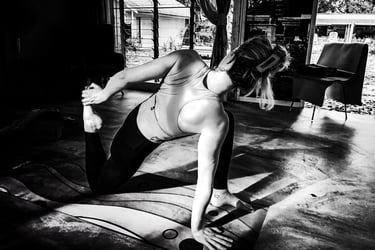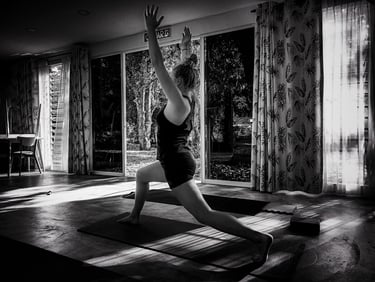Yoga Feels Different Each Time
Several factors influence how quickly you perceive the benefits of yoga:
You may have noticed that some people seem naturally attuned to their bodies. They pick up on subtle shifts in muscle engagement, breath, and relaxation almost instantly. If you don’t experience the same immediate awareness, don’t be discouraged. Developing this skill takes time, and it’s completely normal if the effects of a pose aren’t obvious right away.
Body Awareness & Sensory Perception
Some individuals have a heightened ability to sense internal changes (interoception), making it easier for them to notice subtle shifts in a pose. If this isn’t second nature to you, it simply means your interoceptive awareness is still developing. Just like learning a new language, refining your ability to tune into your body’s signals takes time. With consistent practice, you’ll become more attuned to these subtle cues.
Muscle Activation & Neuromuscular Adaptation
If you regularly engage your muscles through sports, physical work, or mindful posture, your neuromuscular system is already well-coordinated. This allows your muscles to activate efficiently in yoga, making the effects of a pose more immediate.
If you’re still learning how to engage your muscles effectively, it may take a few sessions for your nervous system to establish strong connections between your brain and body. This is a natural part of the process, and over time, your body will respond more readily to movement.
Tension vs. Flexibility
Muscle tension and flexibility both shape how a pose feels. If your muscles are tight, your body may initially resist a stretch. As your nervous system signals your muscles to release tension, you’ll gradually experience greater ease.
Conversely, if you’re naturally flexible, you might feel a stretch immediately. However, repeated practice will be essential to develop the strength needed for stability and injury prevention. Both flexibility and strength work together to support your practice.
Breath & Relaxation Response
Your breath plays a crucial role in how a pose feels. When you synchronise movement with deep, steady breathing, relaxation becomes more accessible, amplifying the effects of a pose. On the other hand, if you hold tension or breathe shallowly, your body may struggle to release fully, delaying sensations of relief or stretch.




From Expectation to Awareness
It’s easy to approach yoga with a fixed idea of what you should feel, but focusing too much on expected outcomes can lead to frustration. Instead of chasing a particular result, try approaching your practice with curiosity. Allow your breath to come and go at its own pace, noticing how your body responds without judgment. Not all benefits are instant, but each practice is creating change, whether you feel it immediately or not. ( Continued )
More Insights
